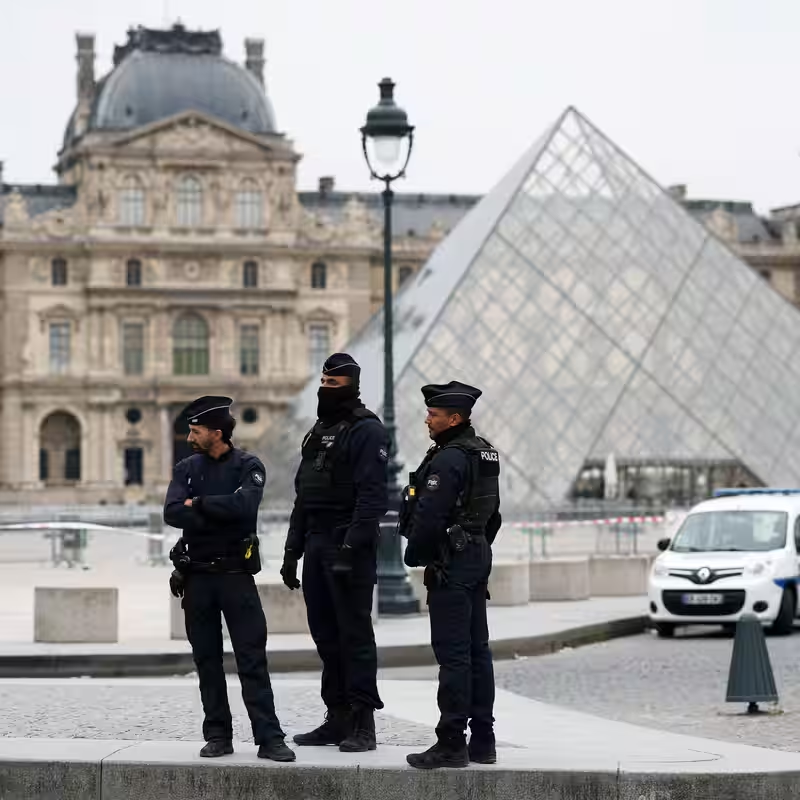Table of Contents
- Louvre Robbery Overview
- How the Heist Unfolded
- What Was Stolen?
- Historical Context of Louvre Thefts
- Security Response and Investigation
- Sources
Louvre Robbery Shocks Paris
In a stunning daylight raid on Sunday, October 19, 2025, thieves executed a meticulously planned heist at the Louvre Museum in Paris, making off with jewelry described by French officials as “priceless” and of “incalculable historical value.” The museum remained closed for the rest of the day as investigators combed the scene for clues.
The robbery, which lasted just seven minutes, has sent shockwaves through the global art and heritage community. Authorities believe the operation was carried out by a team of three or four seasoned criminals who acted with military precision.
How the Heist Unfolded
According to France’s Interior Minister Laurent Nuñez, the thieves struck around 9:30 a.m., using a furniture lift attached to a truck to access the first-floor Galerie d’Apollon—the wing that houses the French crown jewels.
Once in position, the robbers used an angle grinder to breach a window, smashed two display cases, and fled on motor scooters with their loot. The entire operation—from entry to escape—took only seven minutes.
“It’s a major robbery,” Nuñez told France Inter radio, emphasizing the thieves’ experience and coordination. “This wasn’t amateur work.”
What Was Stolen?
While officials have not released a detailed inventory of the stolen items, they confirmed the loot included historic jewelry of “patrimonial” significance—likely pieces from the French royal collection, which includes gems once worn by monarchs like Louis XIV and Marie Antoinette.
Because these artifacts are considered national treasures, they cannot legally be sold on the open market. Experts speculate the thieves may attempt to ransom the items or sell them to private collectors in the underground art market.
Historical Context of Louvre Thefts
This is not the first time the Louvre has fallen victim to audacious thefts:
- 1911: The Mona Lisa was stolen by an employee, Vincenzo Peruggia, and recovered two years later in Italy.
- 1976: Thieves broke in at dawn and stole King Charles X’s diamond-studded sword.
- 1990: A Renoir painting was cut from its frame and stolen from a third-floor gallery.
More recently, European museums have seen a surge in high-value jewel heists—such as the 2019 Green Vault robbery in Dresden, Germany, where over €100 million in royal treasures were taken.
Security Response and Investigation
Despite enhanced security measures implemented in recent years—including motion sensors, reinforced glass, and increased patrols—the Louvre’s defenses were bypassed with alarming ease.
French Culture Minister Rachida Dati confirmed no injuries occurred during the incident. Police have secured the scene, and the museum will remain closed temporarily to preserve forensic evidence.
Investigators are reviewing security camera footage and examining items left behind by the thieves. The Paris prosecutor’s office has launched a formal investigation, with the full extent of the losses still being assessed.
“We can’t prevent everything,” Interior Minister Nuñez admitted—a sobering acknowledgment in the wake of one of the boldest museum heists in modern European history.
Sources
The New York Times: Louvre Closed After Brazen Daylight Robbery




